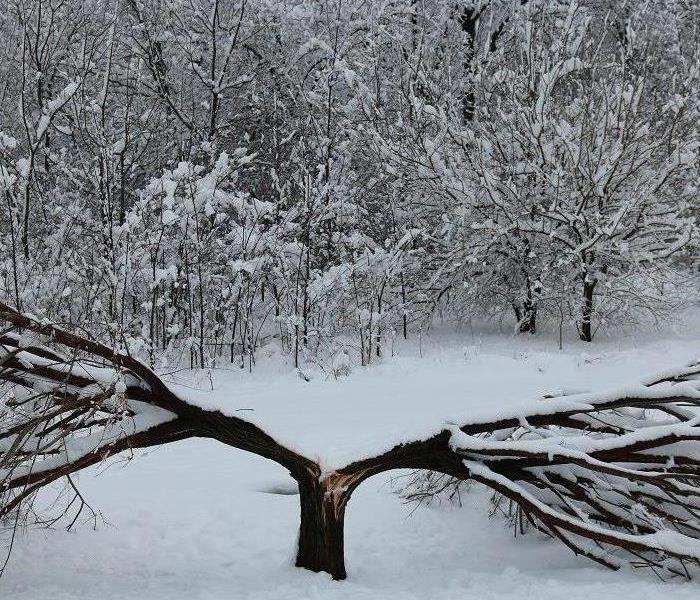Different Types of Storm Damage
12/1/2020 (Permalink)
There are several types of storm damage, including wind, flooding, or even fire. Flooding can cause extensive amounts of damage to your home, and lightning can create fires, while high winds can cause many issues to your home structure.
Wind
The damage which results from extremely high winds is quite easy to see most of the time. Nowadays, roof shingles are designed better than their predecessors regarding their resistance to wind and ever-increasing knowledge and standards. There are many times little can be done to prevent damage by the wind in very extreme conditions. Wind-damaged roofs usually appear to be affected only in certain spots. The room's edges or perimeter are affected by high winds easily since the edge of a roof is quite prone to lifting.
Hail
Round dings in metal are clear signs of hail damage. Determining whether your roof has suffered damage from a hail storm, however, could be a bit more challenging. After hail hits the roof, it knocks off the protective granules where the hail has hit, and these areas of damage are the sources of leaks in the roof in the future if it is not fixed within a few years.
Snow
Snow causes most of its damage from its weight, which immensely increases when ice, rain, and sleet are added to it. On an average-sized roof, two feet of snow can weigh the equivalent of thirty-eight thousand pounds or nineteen tons. The obvious sign many times that a roof is about to fail is if it is sagging.
Ice
The functionality of many gutter and roof systems is affected by the temperatures that fluctuate, making the snow melt then refreeze on the edge of the roof. This makes a dam which the water cannot pass through, meaning that as more snow melts off the roof and trickles down, it gets blocked by an ice dam and makes a puddle. Since roofs were not made to handle standing water, especially as the water line and growing puddle move up the roof, the water can seep through small openings in the roof into your home or attic.
Rain and Flood Damage
Water running out of a typical water drainage basin due to overflowing from a storm can wreak havoc on your property. Streams, creeks, rivers or lakes that overflow, flash floods, a storm surge, or a tsunami are all examples of possible flood damage.
Flooding can cause damage to your property, including your foundation and drywall damage. Most of the time, the drywall will need to be removed and replaced. The flooding can also cause mold to grow on the property due to standing or hidden water, such as inside the walls. This should be taken care of as soon as possible, usually by a professional storm damage remediation company, as mold can cause health effects to you and your family.
Call an Expert
At the first sign of damage, contact a professional storm damage restoration company. We use specialized equipment and technology to tackle any storm damage to your property. We will be able to restore your property to normal.
Contact SERVPRO of Grand Junction to restore your commercial or residential storm damage "Like it never even happened."






 24/7 Emergency Service
24/7 Emergency Service
